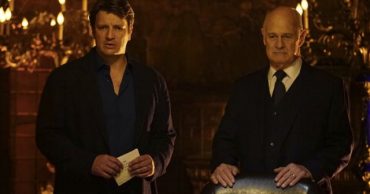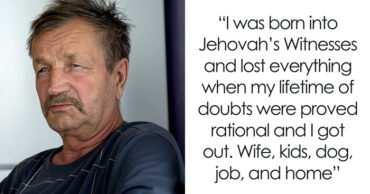
Ahh, the clip show. The bane of scripted television, the clip show is often a signal of two things on a television show: creative exhaustion and/or budgetary restrictions. It often makes for lazily-framed episodes with the main cast “reflecting” on events of the past – Friends was notorious for it, airing six of them (that’s right, six) throughout their ten-season run, with only one (season nine’s “The One With Christmas in Tulsa,” which pushes Chandler into his final interesting solo arc) providing any reason for existence.
Often, the best “clip show” episodes are episodes that aren’t actually clip shows; Avatar: The Last Airbender‘s third season episode “The Fire Emblem Players” allowed for the same kind of reflective tone as most clip shows, but did so by having actors play out exaggerated versions of their stories on stage, adding texture to the culture of Avatar and providing an important avenue of discovery for each character before the series finale (South Park‘s “City on the Edge of Forever” accomplishes a similar task, using old clips doctored to be inaccurate). Community‘s clip show “Paradigm of Human Memory” taps into untold stories from past adventures of the Greendale 7, a hilarious satire on the very concept of clip shows themselves.
Yet, to find the most effective, moving clip shows, one has to look to FOX’s eternally underrated, turn-of-the-century comedy Malcolm in the Middle, and their two clip episodes. The first, aired early in the show’s run as the penultimate episode of season three (and titled “Clip Show”), sees the three brothers at the psychiatrist (played by Andy Richter) after destroying the family car. At first, it appears to be another thiny-veiled attempt to cut budget, interspersing clips of the first three seasons with the children and parents separately reflecting on the events of their lives.
The final act, however, reveals “Clip Show” to be something deeper; it reveals that Malcolm is struggling to find his place within his own family. When asked how he fits into the family, Malcolm insists that he doesn’t. And he’s probably right; the show goes to great lengths throughout its run to show how the family prevents Malcolm from achieving his potential, be it reasons of his own causing, or things out of his control (like being part of a family that’s barely keeping it together at any given time). As he laments his fortune while Richter’s character lists off alternative options for his upbringing, his brothers come to his defense; as the one person in the family who has a chance at success in the real world (well, later seasons would suggest Dewey might rise above the Buseys and become a musical prodigy, if anyone in the family would just notice), Malcolm is the glue keeping the family together, solving the complex issues facing the family on a regular basis (like doing their taxes every year, or any of the dozens of fun details dropped in throughout the series).

That sudden turn reinforces the bond between brothers that Malcolm in the Middle never forgets, even when the three were constantly exclaiming how much they hated each other, and undermined their every move. By the same token, season four’s “Clip Show II” helped the parental unit of Malcolm in the Middle remember their own place within the family. As the two sit down to work out a will for the kids, Lois and Hal both realize how many mistakes they’ve made as parents; “We’re walking advertisements for forced sterilization!” is the conclusion Hal comes to, while Lois emotionally recalls when she came home from a staph infection after giving birth to Francis, and feeling like she wasn’t needed when it turned out everything was under control.
Again, the final moments reveal what seemed like a random gathering of clips to be something much, much more; all the misadventures and disasters detailed in the flashbacks inform the idea that Lois and Hal have no idea how to be parents, or really any clue at how to manage the stresses of life in any way, shape, or form. Or so it seems; as Dewey walks in with a bump on his head, Lois and Hal snap out of their existential crisis and begin to take care of their boy. It’s only twenty seconds before they’ve iced his head, called the doctor, raised his siblings, and shuttered everyone to the car; just when the parents felt like they’d lost their place and failed at being parents, “Clip Show II” reminded them that being a good parent doesn’t mean getting anything right the first time; as long as you know how to react, your instincts will take over.
The central conceit of Malcolm in the Middle is that no matter how horrible things get, or how awful some people may seem, families are the support systems that keep us moving and motivated when it seems the light of life is being stamped out. Just as Malcolm came to a crisis of identity in “Clip Show,” Lois and Hal forgot who they were in “Clip Show II”; and the climatic moments of both episodes remind them both that they’re part of a family, and that means no matter how wrong things may feel, you’re always in the right place at home. It’s the reason Malcolm in the Middle remains one of the most beautiful, weird family comedies ever produced on television, a show whose universal truths remained relevant, no matter how far into absurdity the show was willing to go.
[Photo via FOX]
 Follow Us
Follow Us





